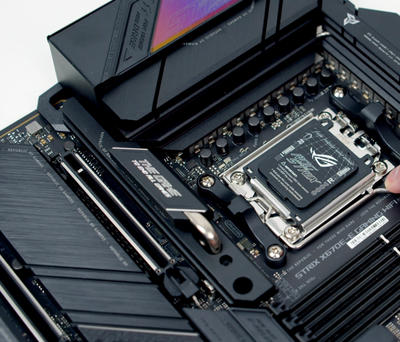
Trying out the ASUS ROG Strix X670E-E Gaming AM5 ATX Motherboard (2024)
My thoughts on ASUS ROG Strix X670E-E: features, performance, issues, and market comparison.
Introduction
I recently upgraded my gaming setup with the ASUS ROG Strix X670E-E Gaming WIFI motherboard as its core component. In this article, I will discuss the features of this motherboard, its performance and reliability, any challenges I encountered, and how I addressed them. Additionally, I will evaluate its worth compared to other options on the market.
Some photos (click to enlarge)
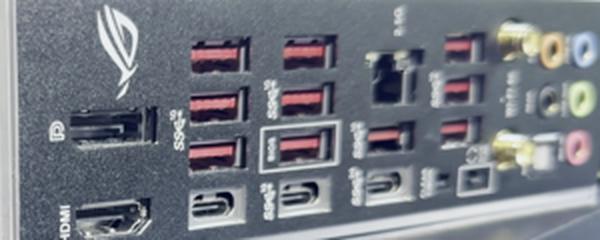
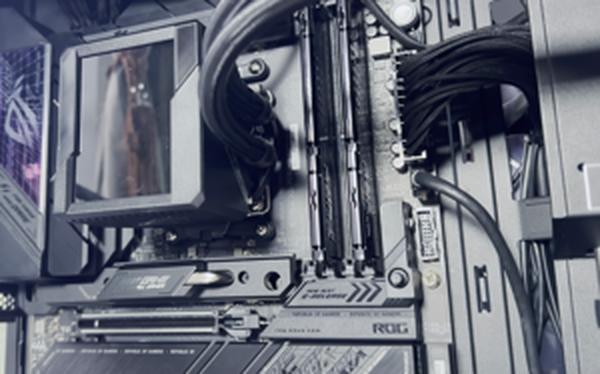
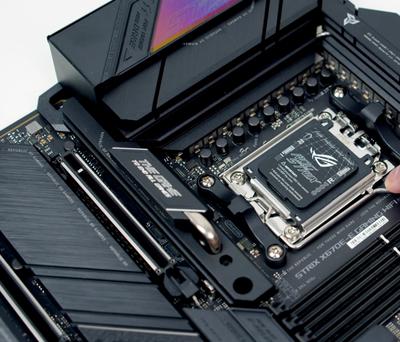
Specs of the ASUS ROG Strix X670E-E Motherboard
- Release Year
- Brand
- Chipset Type
- Compatible Devices
- Compatible Processors
- Cpu Model
- Cpu Socket
- Memory Clock Speed
- Model Name
- Platform
- Ram Memory Technology
Prices
ROG Strix X670E-E Features

The ASUS ROG Strix X670E-E Gaming WIFI motherboard is an exciting option for tech enthusiasts like me who are building a high-end gaming PC. Here are some of its key features that stand out:
AMD Socket AM5(LGA 1718): Compatibility with AMD Ryzen 7000 Series Desktop Processors makes this board future-proof and ready to harness the power of the lastest CPUs.
DDR5 Memory Support: The fact that this motherboard supports DDR5 RAM is a major plus, as it allows for faster data processing and the potential for better gaming performance and system responsiveness.
PCI Express® 5.0: With PCIe 5.0, one can anticipate very fast data transfer—essential for loading games quickly and for high-speed storage solutions.
However, while these features point to a high-performance gaming experience, the motherboard isn’t without potential drawbacks. For instance, only having snaps on one side for the RAM slots can be deceiving. You might think the RAM is fully inserted when it's not, leading to various, possibly confusing errors. Additionally, extended boot times can occur as the motherboard goes through its initial learning phase with the RAM, which might be off-putting for some users.
Another issue is the board’s compatibility with older Windows installs. During setup, the board may recurrently try to boot from an existing install, which can cause errors if not properly managed by booting into the installation media directly.
In terms of design, the futuristic elements, iridescent ROG logo, and Aura lighting give the motherboard a distinctive aesthetic that appeals to gamers looking to build a PC with a vibrant appearance. Moreover, the board is packed with:
Intelligent Control Features: Including AI Cooling II, Two-Way AI Noise-Cancellation, and AI Networking—tools that simplify system configuration.
Robust Power Design: Boasting 18 + 2 teamed power stages, this delivers the muscle required for multi-core processors.
Optimized Thermal Design: An array of heatsinks and heatpipes help in maintaining thermals under control, which is crucial for maintaining the performance and longevity of PC components.
From a connectivity standpoint, having onboard WiFi 6E and Intel 2.5 Gb Ethernet plus ASUS LANGuard, ensures that network performance is top-notch and stable.
Despite the fantastic array of features, there's a possibility of experiencing issues out of the box, indicating potential quality control problems. It’s reassuring to know that ASUS has addressed some of these issues with BIOS updates, though this does require additional steps before the build is up and running smoothly.
All things considered, the ROG Strix X670E-E presents an impressive array of forward-looking features that cater to vigorous computing and gaming needs. The overall high quality, coupled with the expansive feature set, makes it a motherboard worth considering for a high-end build, provided you’re prepared for potential initial teething problems and BIOS updates.
Performance and Stability
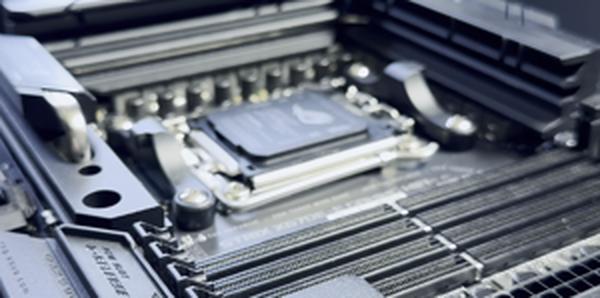
In my hands-on time with the ASUS ROG Strix X670E-E Gaming Motherboard, a myriad of features have certainly elevated my gaming and work experience, though not without some accompanying drawbacks. From a performance standpoint, this motherboard aligns with its top-tier positioning, cultivating a nurturing environment for the Ryzen 7000 series processors to thrive. Here's a breakdown of my observations:
Robust Power Solution: Having 18 + 2 power stages offers plenty of headroom for high-end CPUs, and it's poised to handle intensive multitasking and gaming sessions.
Optimized Thermal Design: The large VRM heatsinks are a godsend, ensuring that even under sustained loads, thermal throttling isn't an issue. The M.2 backplate's inclusion is a thoughtful touch, aiding PCIe 5.0 M.2_1 slot cooling.
High-Performance Networking: Wi-Fi 6E and the 2.5 Gb Ethernet port spearheads the networking front, granting swift and stable internet access which is indispensable for gaming and large file transfers.
Memory and Storage Potential: Managing to run DDR5 RAM at 6400 MHz after fiddling with BIOS settings is a testament to the motherboard's capabilities, and the multiple M.2 slots are future-proof.
Yet, it's not without minor setbacks. I've noted the initial BIOS setup can be daunting for less experienced users, and having to update the BIOS immediately out of the box could be intimidating. While the board offers bountiful M.2 slots, the limitation of one full-speed 16x PCIe slot does pinch a bit in terms of expansion flexibility. Potential buyers should bear this in mind, especially if they plan to integrate more hardware that leverages the PCIe bandwidth.
Moreover, despite the sturdy power supply system, initial stability issues were a concern. It's lucky that a combination of BIOS updates and tweaking specific settings has reached a satisfying level of stability. Nonetheless, for those spending a premium, it could cause a moment's tension.
The motherboard's diagnostic display deserves praise, as it simplifies troubleshooting, a boon for both seasoned builders and newcomers. Part of my fulfillment comes from tweaking settings in the UEFI, where options are extensive and allow for fine customization.
The performance of PCIe 5.0 M.2 slots is nothing short of impressive. Although I lack current generation M.2 drives, the future-proofing aspect is appealing, knowing the board won't be a bottleneck as faster storage options become available.
In the performance and stability department, the ASUS ROG Strix X670E-E Gaming Motherboard stands tall. Once the initial barriers are overcome, it delivers scalable performance that caters to demanding workloads and gaming pursuits. Yes, the beginning may be rocky with the need for BIOS fine-tuning, but the end result is a stable, high-performing platform that is certainly worth considering for a high-end PC build.
Issues and Troubleshooting

Navigating the nuances of setting up a new system with the ASUS ROG Strix X670E-E Gaming Motherboard has been a journey filled with both rewards and challenges. Here's a rundown of my experiences, where the motherboard's premium features come with their own set of troubleshooting adventures:
BIOS Updates: The first order of business upon setting up was to update the BIOS. ASUS has had a history of releasing beta versions that needed refinement. Ensuring that you're running the latest stable UEFI/BIOS version is crucial to avoid potential issues such as CPU VSOC voltage inaccuracies, which can affect system stability.
RAM Compatibility: Checking the QVL (Qualified Vendors List) for memory compatibility is a must. There were some hiccups with getting the system to post with certain RAM, but once I selected a pair that was verified to be compatible by ASUS, the motherboard's EXPO support allowed me to clock them at optimal speeds.
PCIe Lanes: It's important to be mindful that using certain PCIe slots can limit others. For my needs, this wasn't a major issue, but it's something to consider if you plan to use multiple expansion cards and are looking to maximize available bandwidth.
M.2 Slots: The onboard M.2 slots support heatsinks, which is a thoughtful design feature, given that high-speed NVMe drives can run hot.
With these aspects in mind, let's delve further into particular issues and their troubleshooting:
The process of updating the BIOS was straightforward, thanks to ASUS’s feature that allows updating via USB without booting. Admittedly, the first boot time was lengthy due to the RAM training phase, but patience here is key.
Once booted, the motherboard's diagnostic display served as my guide through the initial setup, offering clear codes for any bottlenecks. It was immediately apparent that ensuring correct RAM seating is critical—only one side snaps in place, so double-checking that your modules are fully inserted is necessary to prevent errors.
During setup, configuring the AI-powered features for networking, cooling, and noise cancellation was a breeze, giving the impression of having a highly intelligent board on my side. The existence of hardware buttons for resetting BIOS or releasing PCIe latches is a testament to ASUS's attention to user-friendly design.
On the downside, it's been reported that the Intel I225-V 2.5G Ethernet port has had some recognition issues with certain setups, particularly Windows 10. It’s a reminder that even with a board of this caliber, compatibility quirks are still a reality.
In summary, the ASUS ROG Strix X670E-E Gaming Motherboard is like a high-powered sports car—it requires careful tuning and sometimes a bit of troubleshooting, but once all the parts are running in harmony, the performance is nothing short of spectacular. Despite some initial hitches, I do believe that the ample features and the system's overall quality justify investing time into fine-tuning. And with my setup running stably, I look forward to pushing the limits of what’s possible with this powerhouse at the heart of my rig.
Value and Competition Comparison

When evaluating the ASUS ROG Strix X670E-E Gaming Motherboard, it's essential to weigh its value against the competition. The motherboard market is highly competitive, with various offerings that offer overlapping features at different price points. Following is a succinct markdown list of pros and cons based on my assessment:
Pros:
Robust power solution with 18 + 2 power stages.
Advanced thermal design conducive for overclocking and longevity.
High-performance networking with onboard WiFi 6E and Intel 2.5Gb Ethernet.
Innovative features like Q-Latch, Q-Release, and BIOS Flashback button.
Future-ready with PCIe 5.0 support and DDR5 RAM compatibility.
Aesthetically pleasing with good RGB implementation.
Cons:
Premium pricing over competitors.
PCIe lane distribution can be restrictive for some builds.
Initial BIOS issues, although largely addressed in recent updates.
Some may find the feature set overkill for their needs.
I have found that while the ASUS ROG Strix X670E-E Gaming Motherboard commands a premium, the wealth of features and robust build quality somewhat justifies the expense for enthusiasts looking to push their Ryzen 7000 series processors. Particularly, the power delivery and cooling systems have proven to be efficient, which is a significant selling point for those intent on overclocking or running heavy workloads frequently.
Drawbacks, such as the purported instability of early BIOS versions and the price point, are non-trivial. However, recent BIOS updates seem to have improved stability considerably, addressing one of the major concerns I had. The price is still a sticking point, but when considering the rich feature set and the potential future-proofing elements like PCI Express® 5.0, it begins to make sense for those who don't mind paying for top-tier performance and future compatibility.
For users who are not planning to leverage advanced features such as multiple PCIe 5.0 devices or extreme overclocking, there may be more cost-effective alternatives that don't compromise on the essentials. Comparatively, motherboards such as the MSI MPG X570 GAMING PLUS or the Gigabyte X570 AORUS ELITE offer similar core functionality at a lower price point, albeit with less headroom for cutting-edge features and performance tuning.
In the grand scheme of things, the ASUS ROG Strix X670E-E Gaming Motherboard shines in a field where differentiation is often subtle yet important. While it might not be the go-to for budget-sensitive builds, it's a formidable competitor for a high-tier gaming or professional workstation setup - assuming the budget allows for it. My experience is different with this motherboard, as I prioritize future readiness and a comprehensive feature set, and am willing to pay a little extra for these benefits despite the initial hurdles.
Comments (0)
Share